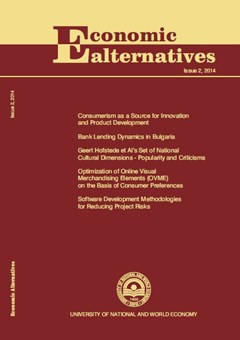A Method for Choosing a Project's Planned Value Curve by Integrating Earned Value and Risk Management
Author: Svetlana Boyadzhieva-Georgieva
Abstract
The timely and precise feedback is of crucial importance for the success of every project. It allows identifying the problems at an early stage and performing corrective actions that help keeping the initially planned costs and time of the project on schedule. Nowadays Earned Value Management is known as one of the most effective methods for the performance measurement of projects. At the same time it uses the fundamental principle that the models and trends of the past can be used to determine the future status. As both Earned Value Management (EVM) and Risk Management (RM) are directed towards solving the same problem – measuring a project’s performance by providing information that is used for a basis for making informed decisions and taking actions, there is a considerable interest in the possibility of developing a combined approach and creating a synergy between them, given their different point of view - while EVM is based on the past, RM is directed towards the future. Currently in practice EVM and RM function as parallel processes without systematic integration. Most of the discussions on the relationship between them are rather theoretical and are addressed to the key principles underlying the two techniques. In this regard the aim of this article is to present the opportunity of these two management approaches to be integrated, given their common intent to explore and reveal the driving forces of the project performance. The study will provide a methodology that will assist the selection of one of the key figures in the theory of EVM - the basic project plan. This methodology is based on historical data from completed projects, as well as on simulation methods that generate possible project outcomes.


